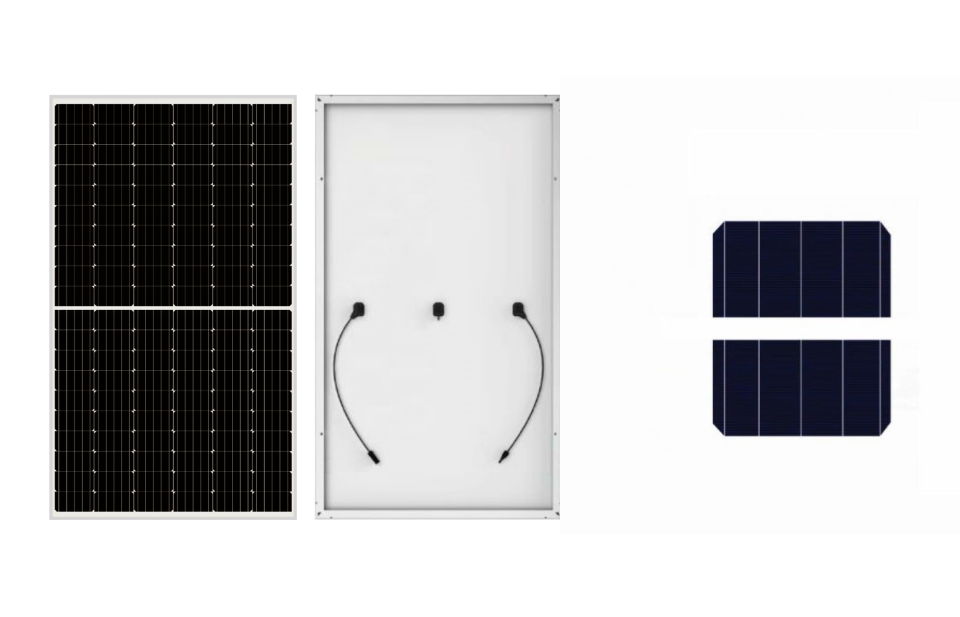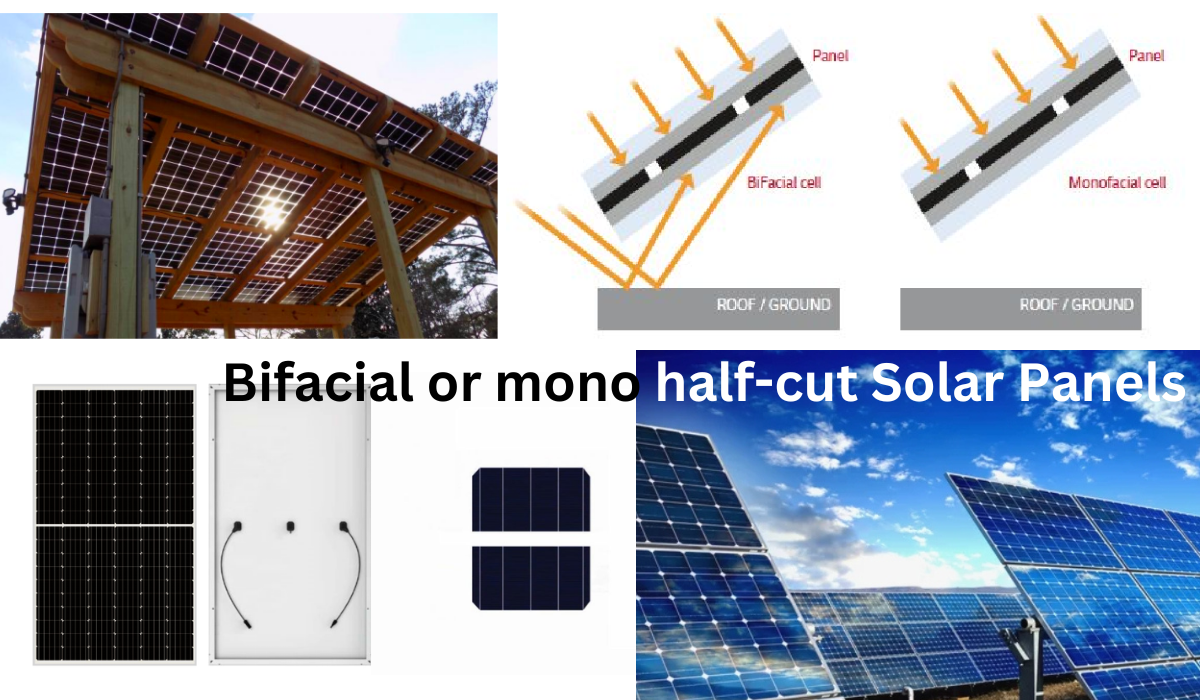Two different types of solar panels—bifacial and mono half-cut—have different execution characteristics and design aspects. Here’s a quick explanation of each:

Contrary to conventional Solar Panels, which only absorb sunlight from the front, bifacial Solar Panels are designed to capture sunlight from both sides of the board.
They have a simple backsheet or piece of glass that allows light to pass through and illuminate the back surface.
The energy production of a bi-facial solar panel may be increased by capturing reflected and diffused light.
They are typically used in settings where the light reflected from the back of the board might be advantageous, such as ground-mounted frameworks with intelligent surfaces or elevated frameworks with bright-colored surfaces underneath.
Proficiency
Under certain conditions, bifacial solar panels can provide increased energy production and perhaps improve system performance.
The reflectivity of the surface underneath the board and the amount of diffuse light available are only two examples of factors that can have a significant impact on how the back of a bifacial solar panel displays.
Under optimal conditions, bifacial solar panels can produce improvements in side energy of 5% to 30% or more, increasing the overall efficiency of the system.
However, the precise setup and design of the mounting structure are crucial to the addition of power successfully.

Mono Half-Cut Solar Panels are mono crystalline Solar Panels that have been conventionally divided into two halves and then cut with a laser to achieve this.
Every part of the board functions freely, genuinely intended that even if one half is hidden or partially covered, the other half will still be able to generate electricity.
This strategy reduces power loss caused by covering, dirt, or other obstacles, making them more effective than regular Solar Panels in such situations.
Mono-cut in half Low resistance in solar panels reduces internal power loss and improves performance overall.
They are appropriate for residential and commercial buildings where hiding from trees, buildings, or other obstructions is a concern.
Mono-cut in half When concealment or soiled conditions can reduce overall power output, solar panels are more effective. The effect of concealment or deterrents on one side of the solar panel is disconnected when it is divided into equal pieces, allowing it to continue producing power.
Productivity
The specific efficiency benefits of mono half-cut solar panels may vary depending on the design, manufacturing method, and other factors.
Generally speaking, mono half-cut solar panels have efficiencies that are 1% to 3% greater than those of typical mono glasslike solar panels.
Reduced resistant disasters as a result of a halved plan can contribute to more advanced overall framework execution.
Bifacial and mono half-cut solar panels differ primarily in their design and intended use. While mono half-cut solar panels operate in isolated places to minimise hiding and hindering effects, bifacial solar panels employ reflected and diffused light to capture light from both sides. The two inventions aim to increase energy production and improve the general efficacy of frameworks in various situations.
The specific productivity benefits of mono half-cut solar panels may vary depending on the design, manufacturing method, and other factors.
Overall, mono half-cut solar panels can achieve efficiencies that are between 1% and 3% greater than those of mono transparent solar panels.
Reduced resistance-related problems as a result of a lopsided design can contribute to a more developed overall framework execution.
I think that mono half-cut solar panels are better than bifacial solar panels because the former can be optimized to produce a mono half-cut; warranty, cost, and suitability for installation requirements all matter. If there is dirt on the bottom surface of the latter, sunlight will not be reflected and the solar panel will continue to operate as a single-sided solar panel.
You May Like: 1.Supercharge Your Electric Vehicle(EV) : Embrace the Solar-Powered Wheel Revolution 2. Understanding the Different Categories of Solar Power Plants 3.Why Wind Power better than Solar Power 4.Exploring the Best Solar Panel Choice for Your Home or Factory
